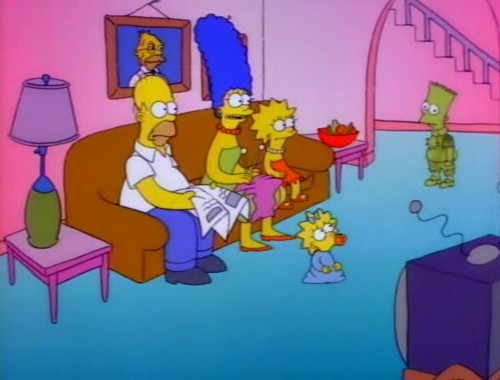Original Raw and Uncut
Two-Headed Starfish
This time I'm gonna dig deeper on how other shows change their art style over time. We've already covered Spongebob, and I'm tired of it. This time aorund I'm gonna start off with older cartoons and adult programs:
Let's start off with Tom & Jerry
Early-1940s MGM era:

Tom and Jerry is one of the oldest cartoons in existence. The films started out with realistic animal sounds and movement. Very dull coloring (Due to the film processing technology at the time) Tom's head is less oblong and more round, and Jerry is more plump
Mid-to-Late 1940s MGM era:

Most common look to Tom and Jerry, a good chunk of the shorts in this era had this look, basic smooth tom and jerry look, although not as fluent as the earlier half of the decade
1950s Cinemascope era:

Tom is more of a blueish tint, the designs have became more streamlined. Episodes aren't as fluent, and films are now cheaper to produce
Early 1960s Gene Deitch:

Cheap animation that has a Saturday morning feel, rigid movements, and eirre electronically produced sound effects. Designs are even more streamlined, combined with choppy stiff movement
Mid-to-Late 1960s Chuck Jones:

Rigid, but very expressive animation, sharper look to it, and the erie sound effects are gone. Tom and Jerry look chunkier
Johnny Test
First Season: (2005) Digital ink and paint

Crisp think lines, with decent movement, good look. Dmmier colors. May be slightly blocky, but some things are round
Everything Else: (2006-2012) Flash

Rigid, rubbery, robotic-like movement, eye-peircingly bright colors, and uncanny animation. Jagged lines
Gumball
First Season (2011)

Blocky, less streamlined animation, more expensive, although limited, thinner lines, shadows, and flat-looking drawings. The animation here is more hand drawn
Everything Else:

Thicker lines, everything is round without a single point or edge like Season 1. Shadows are gone, animation is better and more realistic, although facail expressions are more limited
Let's start off with Tom & Jerry
Early-1940s MGM era:

Tom and Jerry is one of the oldest cartoons in existence. The films started out with realistic animal sounds and movement. Very dull coloring (Due to the film processing technology at the time) Tom's head is less oblong and more round, and Jerry is more plump
Mid-to-Late 1940s MGM era:

Most common look to Tom and Jerry, a good chunk of the shorts in this era had this look, basic smooth tom and jerry look, although not as fluent as the earlier half of the decade
1950s Cinemascope era:

Tom is more of a blueish tint, the designs have became more streamlined. Episodes aren't as fluent, and films are now cheaper to produce
Early 1960s Gene Deitch:

Cheap animation that has a Saturday morning feel, rigid movements, and eirre electronically produced sound effects. Designs are even more streamlined, combined with choppy stiff movement
Mid-to-Late 1960s Chuck Jones:

Rigid, but very expressive animation, sharper look to it, and the erie sound effects are gone. Tom and Jerry look chunkier
Johnny Test
First Season: (2005) Digital ink and paint

Crisp think lines, with decent movement, good look. Dmmier colors. May be slightly blocky, but some things are round
Everything Else: (2006-2012) Flash

Rigid, rubbery, robotic-like movement, eye-peircingly bright colors, and uncanny animation. Jagged lines
Gumball
First Season (2011)

Blocky, less streamlined animation, more expensive, although limited, thinner lines, shadows, and flat-looking drawings. The animation here is more hand drawn
Everything Else:

Thicker lines, everything is round without a single point or edge like Season 1. Shadows are gone, animation is better and more realistic, although facail expressions are more limited



























